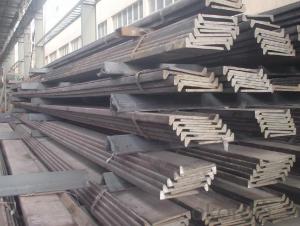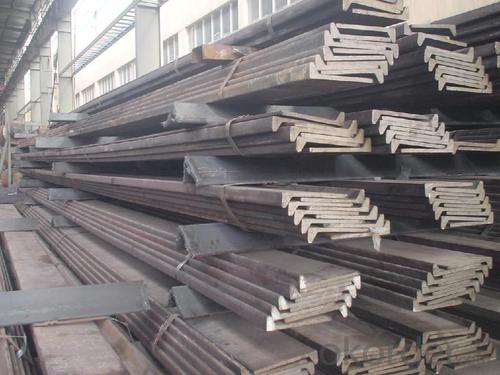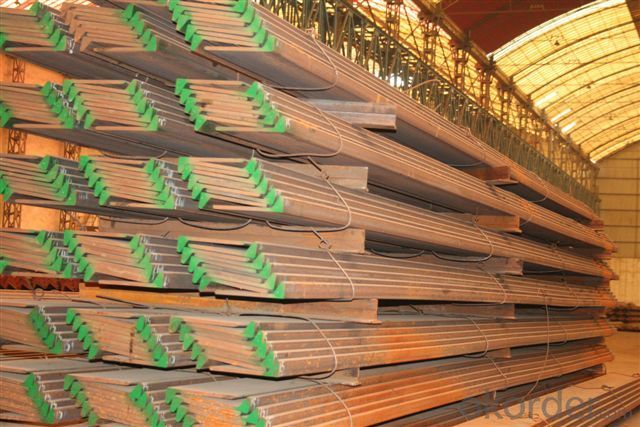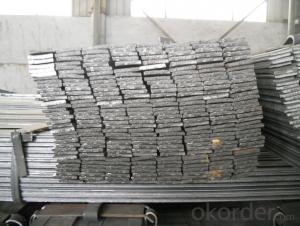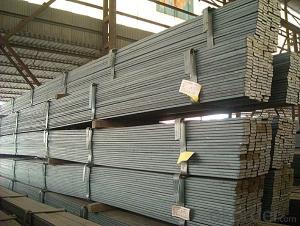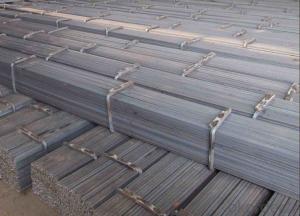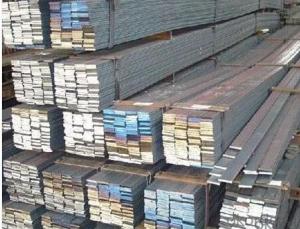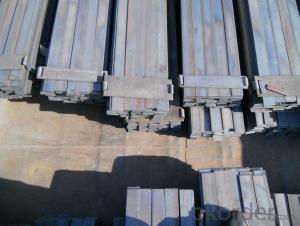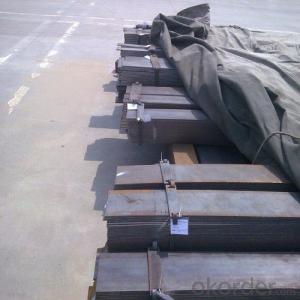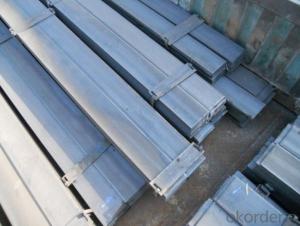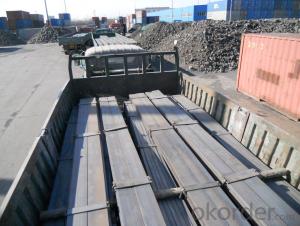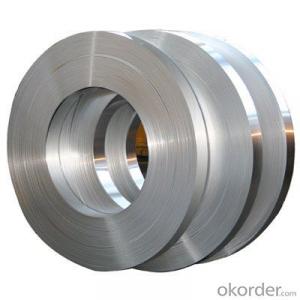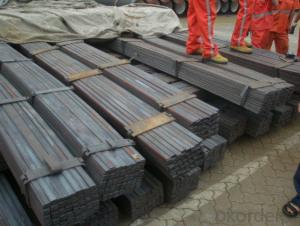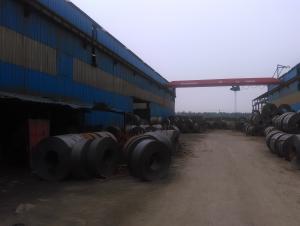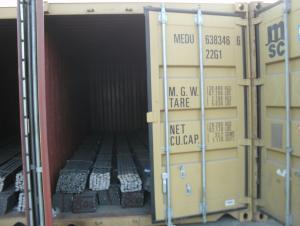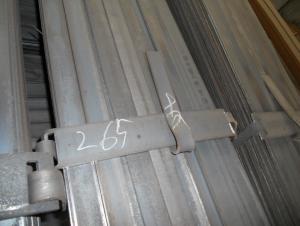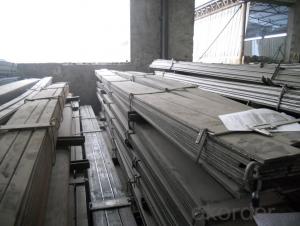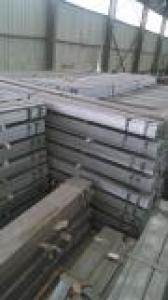Flat Bulb Bar Steel Ball From 12# To 22#
- Loading Port:
- China main port
- Payment Terms:
- TT or LC
- Min Order Qty:
- 50 m.t.
- Supply Capability:
- 5000 m.t./month
OKorder Service Pledge
OKorder Financial Service
You Might Also Like
Commodity: Carbon Steel Flat Bar
Standard: GB, JIS, ASTM,
Material: Q235, SS400 or Equivalent
Origin place: China
Thickness: 3mm-30mm
Width:20mm-200mm
Length: Max 12m
Certification: SGS/BV
Chemical composition
Alloy No | Grade | Element(%) | ||||
C | Mn | S | P | Si | ||
Q235 | B | 0.12—0.20 | 0.3—0.7 | ≤0.045 | ≤0.045 | ≤0.3 |
Physical properties
Alloy No | Grade | Yielding strength point(Mpa) | Tensile strength (Mpa) | Elongation after fracture(%) | ||||||
Thickness (mm) | Thickness (mm) | |||||||||
≤16 | >16--40 | >40--60 | >60--100 | ≤16 | >16--40 | >40--60 | >60--100 | |||
≥ | ≥ | |||||||||
Q235 | B | 235 | 225 | 215 | 205 | 375--500 | 26 | 25 | 24 | 23 |
Usage/Applications of Flat Bar
Widely used for construction;
Machinery manufacturing;
Iron tower steel structure;
Shipbuilding; Steel grating;
Staircase;
Bridge;
Viaduct;
Railway spare parts;
Boilers making etc.
Packaging & Delivery
Packaging Details: The Steel Flat Bars are packed in bundles and loaded in 20 feet/40 feet container, or shipped by bulk cargo ,also we can do as customer's requirements.
Delivery Details:30~45 days upon the receipt of buyer payment by T.T. or L/C.
Production Flow
The Carbon Steel Flat Bar is made through three processes:
1.Feeding the material: Feeding the row material (the steel plate) to Slitting Line.
2.Slitting:The steel plate would be slitted into expected width by lengthways cutter.
3. Leveled and cutting: The plat bar would be ground into level by the grinder and then cut into required length.
FAQ:
Q1: Why buy Materials & Equipment from OKorder.com?
A1: All products offered byOKorder.com are carefully selected from China's most reliable manufacturing enterprises. Through its ISO certifications, OKorder.com adheres to the highest standards and a commitment to supply chain safety and customer satisfaction.
Q2: What makes stainless steel stainless?
A2: Stainless steel must contain at least 10.5 % chromium. It is this element that reacts with the oxygen in the air to form a complex chrome-oxide surface layer that is invisible but strong enough to prevent further oxygen from "staining" (rusting) the surface. Higher levels of chromium and the addition of other alloying elements such as nickel and molybdenum enhance this surface layer and improve the corrosion resistance of the stainless material.
Q3: Can stainless steel rust?
A3: Stainless does not "rust" as you think of regular steel rusting with a red oxide on the surface that flakes off. If you see red rust it is probably due to some iron particles that have contaminated the surface of the stainless steel and it is these iron particles that are rusting. Look at the source of the rusting and see if you can remove it from the surface.
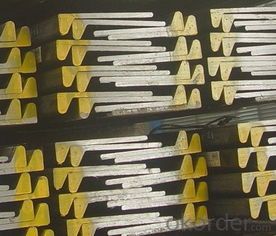
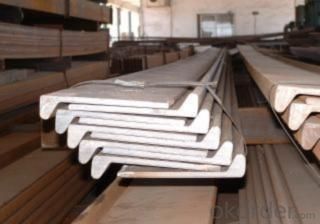
- Q: Can steel flat bars be used for fencing or security purposes?
- Certainly! Steel flat bars have numerous applications in fencing and security. Their robustness and durability make them ideal for building strong and secure barriers. You can utilize them to construct perimeter fences, gates, or security grilles to safeguard properties, commercial buildings, or restricted areas. Achieving a solid and impenetrable structure is possible by welding, bolting, or mounting steel flat bars. Furthermore, their height, length, and design can be customized to meet specific security needs. The resistance of steel flat bars to corrosion and weathering guarantees their long-lasting performance, making them a top-notch option for fencing and security purposes.
- Q: What is the difference between a steel flat bar and a steel angle bar?
- A steel flat bar and a steel angle bar are two different shapes of steel bars that serve distinct purposes in various applications. A steel flat bar, as the name suggests, is a rectangular-shaped bar with evenly distributed thickness throughout its length. It has a flat surface on the top and bottom, making it ideal for applications that require a level and smooth support or a structural component. Steel flat bars are commonly used in construction, manufacturing, and industrial settings where strength, stability, and load-bearing capacity are crucial. They can be easily welded, machined, or drilled, making them versatile for a wide range of applications. On the other hand, a steel angle bar, also known as an L-shaped bar, has two legs of equal or varying lengths that meet at a 90-degree angle. The legs can have the same or different thicknesses, depending on the desired strength and structural requirements. Steel angle bars are primarily used for structural support, reinforcement, and framing applications. They are commonly used to reinforce corners, joints, or edges of structures such as buildings, bridges, and machinery. The 90-degree angle provides additional strength and stability, making angle bars suitable for heavy-duty applications. In summary, the main difference between a steel flat bar and a steel angle bar lies in their shape and intended use. Steel flat bars have a flat surface throughout their length and are used for various applications that require a level and smooth support or structural component. Steel angle bars, on the other hand, have an L-shaped profile and are primarily used for structural support, reinforcement, and framing applications, especially where additional strength and stability are required.
- Q: Are steel flat bars suitable for the construction of hospitals or healthcare facilities?
- Hospitals or healthcare facilities can benefit from the use of steel flat bars. The strong and durable nature of steel makes it a commonly used material in construction projects, thanks to its high structural integrity. The flat shape of steel bars allows for easy fabrication and installation, making them practical for various applications. In healthcare facilities, the importance of structural stability cannot be overstated as it ensures the safety of patients, staff, and equipment. Steel flat bars provide the necessary strength and load-bearing capacity to support the weight of the building, as well as any heavy machinery or equipment present. Moreover, steel is highly fire-resistant and can withstand extreme weather conditions, making it a reliable choice for hospitals or healthcare facilities. This ensures the safety and security of the building and its occupants. Additionally, steel flat bars are versatile and can serve multiple purposes within healthcare facilities. They are often used in constructing partitions, frames, handrails, and other structural elements. Steel's strength and durability also make it suitable for supporting ceiling-mounted equipment and fixtures. Furthermore, steel bars are easily recyclable, making them an environmentally friendly option for construction projects. This aligns with the growing trend of sustainable and eco-friendly design in healthcare facilities. However, it is crucial to ensure that the steel used in construction meets all relevant codes and standards for healthcare facilities. This includes factors such as corrosion resistance, hygiene requirements, and accessibility regulations. Consulting with experienced structural engineers and architects specializing in healthcare facility design can aid in determining the most suitable type and grade of steel flat bars to be used. In summary, steel flat bars are a suitable choice for constructing hospitals or healthcare facilities due to their strength, durability, fire resistance, and versatility. Nonetheless, it is vital to consider specific requirements and regulations to ensure that the steel used meets all necessary standards for healthcare facilities.
- Q: Can steel flat bars be used for manufacturing kitchen equipment?
- Yes, steel flat bars can be used for manufacturing kitchen equipment. Steel is a commonly used material in the manufacturing of kitchen equipment due to its strength, durability, and resistance to corrosion. Steel flat bars can be easily formed and shaped into various kitchen equipment components such as shelves, racks, countertops, and supports. Additionally, steel flat bars can be welded or joined together to create larger structures or frameworks for kitchen equipment. The versatility and reliability of steel make it an excellent choice for manufacturing kitchen equipment that can withstand heavy usage and provide long-lasting performance.
- Q: What are the different methods of surface embossing for steel flat bars?
- Steel flat bars can be embossed using various methods. One commonly used technique is roller embossing, where the flat bar is passed between two rollers with a patterned surface. As the bar goes through the rollers, the pattern is imprinted onto its surface, resulting in an embossed design. Another method is press embossing, where the flat bar is positioned between a patterned die and a matching counter die. By applying pressure to the dies, the pattern is pressed into the bar's surface. Laser embossing is a third option, which entails utilizing a laser beam to selectively remove material from the bar's surface in a patterned way. This method allows for the creation of diverse embossed patterns, as the laser can be controlled accordingly. Furthermore, chemical embossing is also available. This involves applying a chemical solution to the bar's surface, which reacts with the metal and forms an embossed pattern. Each method possesses its own set of advantages and disadvantages. The choice of method depends on factors such as the desired pattern, design complexity, and project constraints such as cost and time limitations.
- Q: What are the benefits of using steel flat bars in architectural projects?
- There are several benefits of using steel flat bars in architectural projects. Firstly, steel flat bars offer high tensile strength and exceptional durability, making them suitable for supporting heavy loads and withstanding harsh weather conditions. Secondly, their versatility allows for various applications such as framing, support structures, and decorative elements. Additionally, steel flat bars are malleable, making it easier to shape and customize according to specific project requirements. Moreover, steel's corrosion resistance minimizes the need for regular maintenance and ensures long-term performance. Lastly, steel is a sustainable and environmentally friendly material, as it can be recycled indefinitely without losing its properties, reducing the overall environmental impact of architectural projects.
- Q: Does the cable trench need grounding?
- Cable trench grounding practices: ground pile using hot galvanized steel angle (50X5X2500), every 20 meters to hit a root. The pile top is 0.6 meters away from the ground, and the ground wire is made of galvanized steel flat bar (40X4). Cable grounding wire and cable groove on both sides of the main frame by welding, every 20 meters will ground wire leads and grounding pile welding, while the grounding cable trench on both sides of the ditch bottom connection, grounding wire used for 10 hot dip galvanized steel. All grounding devices need to be welded firmly at the joint, and the welding place is treated with asphalt.
- Q: What industries commonly use steel flat bars?
- The industries that commonly use steel flat bars include construction, manufacturing, transportation, automotive, and oil and gas.
- Q: Are steel flat bars suitable for making architectural screens or grilles?
- Yes, steel flat bars are suitable for making architectural screens or grilles. Steel flat bars offer several advantages that make them a popular choice for architectural applications. Firstly, steel is a durable and strong material, making it ideal for creating sturdy screens and grilles that can withstand various weather conditions and provide long-lasting performance. Additionally, steel flat bars can be easily fabricated and shaped into different designs, allowing for customization and creativity in architectural projects. The versatility of steel also enables architects to create screens and grilles with different patterns, textures, and finishes, enhancing the aesthetic appeal of the structure. Moreover, steel flat bars are cost-effective compared to other materials, making them a practical choice for architectural screens or grilles. Overall, steel flat bars offer the necessary strength, durability, versatility, and cost-effectiveness required for making architectural screens or grilles.
- Q: Can steel flat bars be used for manufacturing furniture?
- Yes, steel flat bars can be used for manufacturing furniture. Steel is a strong and durable material that can provide stability and support for furniture pieces. Steel flat bars can be used to create the frames and structures of various furniture items such as tables, chairs, shelves, and cabinets. They can be easily welded, cut, and shaped to fit the desired design and dimensions of the furniture. Additionally, steel flat bars are resistant to warping, cracking, and rotting, making them suitable for long-lasting furniture pieces. However, it is important to consider the aesthetic appeal and comfort of the furniture, as steel can be heavy and may require additional elements like cushions or upholstery to enhance comfort.
Send your message to us
Flat Bulb Bar Steel Ball From 12# To 22#
- Loading Port:
- China main port
- Payment Terms:
- TT or LC
- Min Order Qty:
- 50 m.t.
- Supply Capability:
- 5000 m.t./month
OKorder Service Pledge
OKorder Financial Service
Similar products
Hot products
Hot Searches
Related keywords
